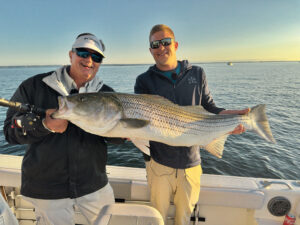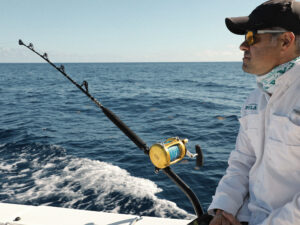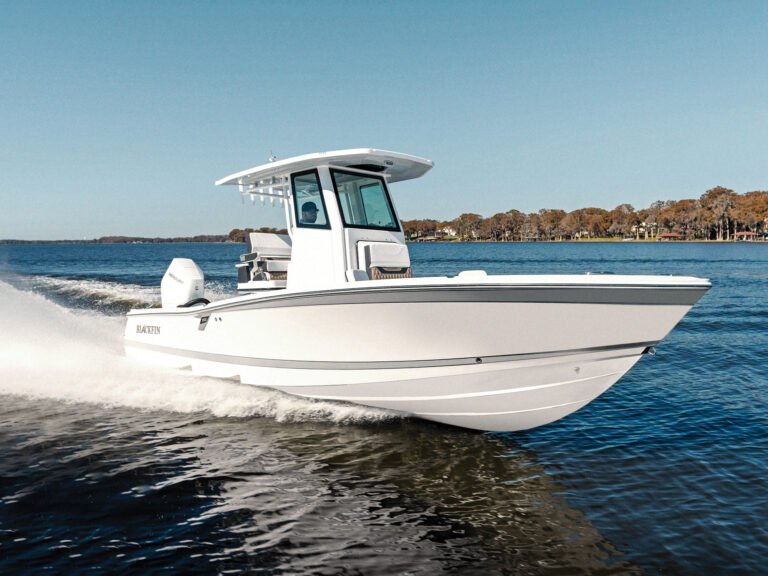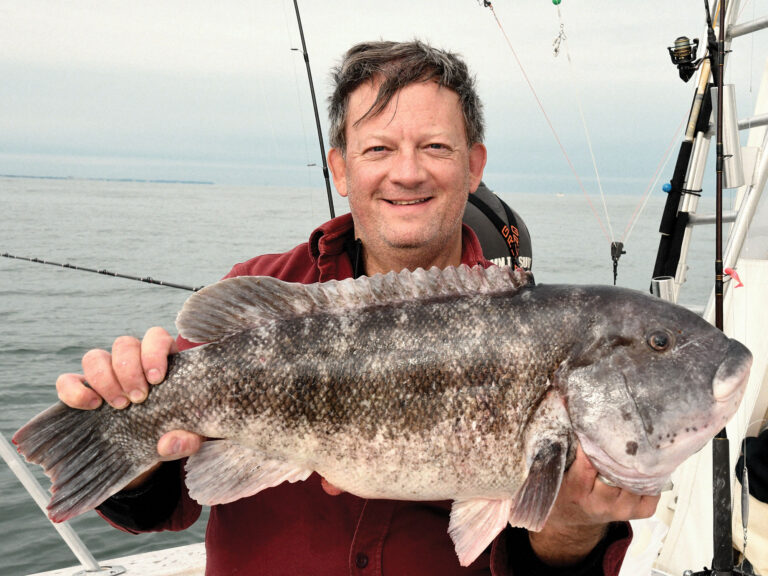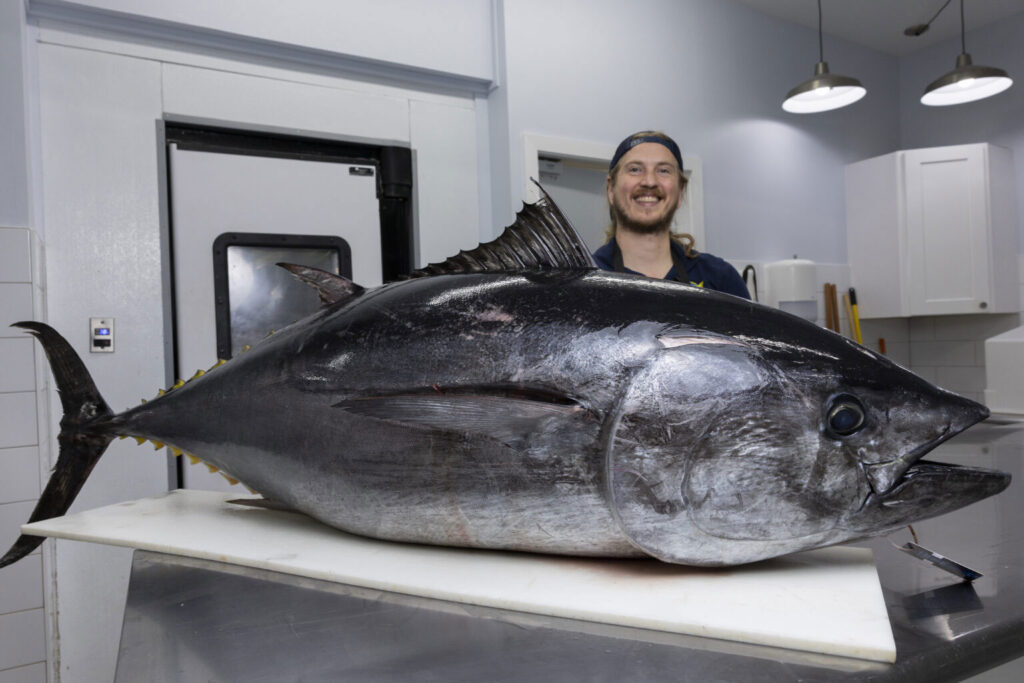
Either learn the proper techniques to fillet bluefin tuna or leave it to a pro. A bluefin tuna is considered by many to be the ultimate prize both on the table and on the end of the line. Powerful, fast, large and absolutely delicious, bluefin tuna demand respect from anglers around the world.
The thrill of hooking into a bluefin, feeling that first blistering run, and hearing the reel scream as line peels off is unlike anything else in the world of fishing. But beyond the fight, bluefin tuna are a marvel of the ocean, a species built for speed, endurance, and, if handled properly, one of the best meals you can put on a plate.
Where to Find Bluefin Tuna
Recreational fisheries in the US are experiencing an upward trend for bluefin tuna on both the Atlantic and Pacific coasts. Bluefin tuna roam vast stretches of ocean, but certain hotspots stand out year after year.
In recent years, the nearshore bite off New York and New Jersey has been astoundingly good. The legendary Stellwagen Bank fishery out of Cape Cod heats up in summer and fall, when bluefin hound schools of herring and mackerel. In the winter, they show up off North Carolina’s Outer Banks, where anglers pursue massive fish, sometimes exceeding 800 pounds. Off Southern California, bluefin appear offshore from spring through fall, often pushing in closer to shore than many expect.
The peak season depends on the region. In New England, the best months are July through October. Off North Carolina, the winter fishery runs from December through March. On the West Coast, bluefin begin arriving in late spring, with the best action typically between June and October. Timing your trip around migration patterns, bait concentrations and water temperatures makes all the difference in finding fish.

Why Bluefin Tuna are Special
One of the reasons bluefin tuna are so prized—beyond the fight—is their meat. Unlike most fish, which are purely cold-blooded, bluefin have a unique ability to regulate their body temperature. This thermoregulation is present in other tuna species, but not to the extent of bluefins. It gives them the ability to thrive in a range of water temperatures.
Thermoregulation also affects their flesh, leading to incredible fat content that makes them a delicacy, especially in sushi and sashimi. Fat content varies depending on the time of year and location. Tuna caught in colder waters tend to have more fat, which is why winter fish from the Outer Banks or late-season fish from the Northeast can be absolutely incredible.
The belly meat—known as otoro—is the most sought-after cut. It is rich and buttery with a melt-in-your-mouth texture.
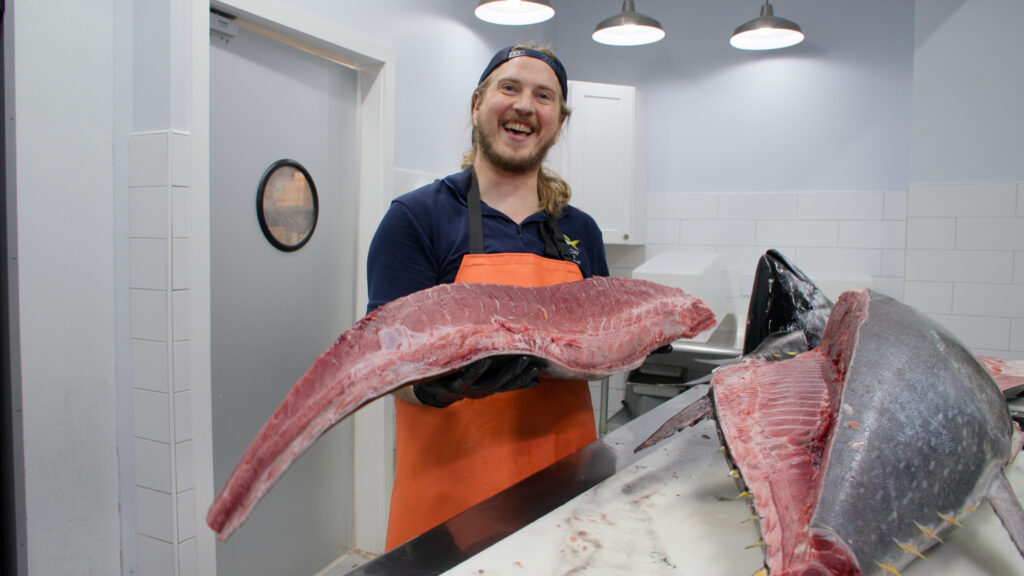
Sustainability of Bluefin Fisheries
Bluefin tuna have been at the center of heated sustainability debates for years. Decades of overfishing put a strain on their populations. In recent years, better management practices and international cooperation along with stricter quotas and conservation efforts have helped bluefin stocks rebound.
Today, both the Atlantic and Pacific populations have recovered from those low years, although careful management is still crucial. In the Gulf of Mexico, which NOAA designated as a bluefin spawning ground, targeting the species is not allowed, but there is an allowance for a few fish each year that are caught incidentally.
One of the biggest shifts in management has been the rise of responsible commercial fishing methods. Traditional handline and rod-and-reel fisheries have a much lower impact compared to large-scale purse seining. There’s also growing interest in bluefin aquaculture, particularly in Japan and the Mediterranean, where sustainable farming practices are being refined.
For recreational anglers, responsible fishing means respecting size and bag limits, handling fish properly if releasing them, and being mindful of the impact we have on the resource. Catching a bluefin tuna is an incredible experience, but ensuring future generations can do the same is important.
Breaking Down a Bluefin Tuna
Landing a bluefin is one thing; breaking it down is another. These massive fish yield some of the most sought-after meat in the world, but knowing how to properly fillet bluefin tuna ensures you get the best cuts possible.
Categories of Bluefin Tuna Meat
The Japanese have made an art form out of breaking down and serving bluefin tuna. They’ve developed classifications for the cuts that come from a tuna based on the amount of intramuscular fat.
There are three main categories of bluefin tuna meat:
• Akami – meaning “red meat” or “lean meat.”
• Chutoro – meaning “medium fatty.”
• Toro – referring to the fatty cuts of the fish.
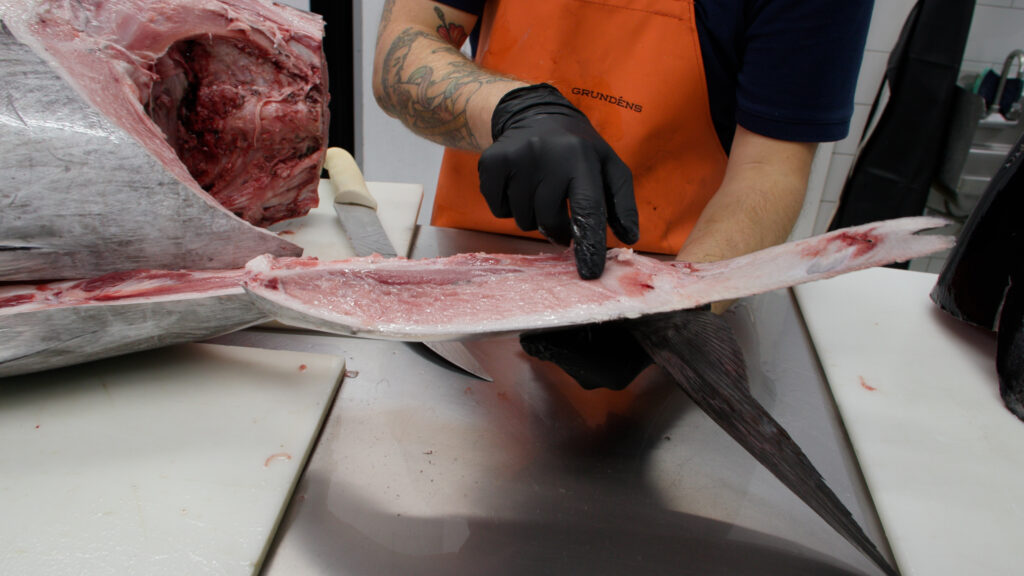
Many people assume toro only applies to the belly. The word toro roughly translates to “melted,” which describes rich, fatty texture found in various parts of the fish—not just the belly. Otoro means “big toro”—the fattiest belly meat. Another prized cut and one of my personal favorites is kama toro, which comes from the collar.
How to Fillet Bluefin Tuna
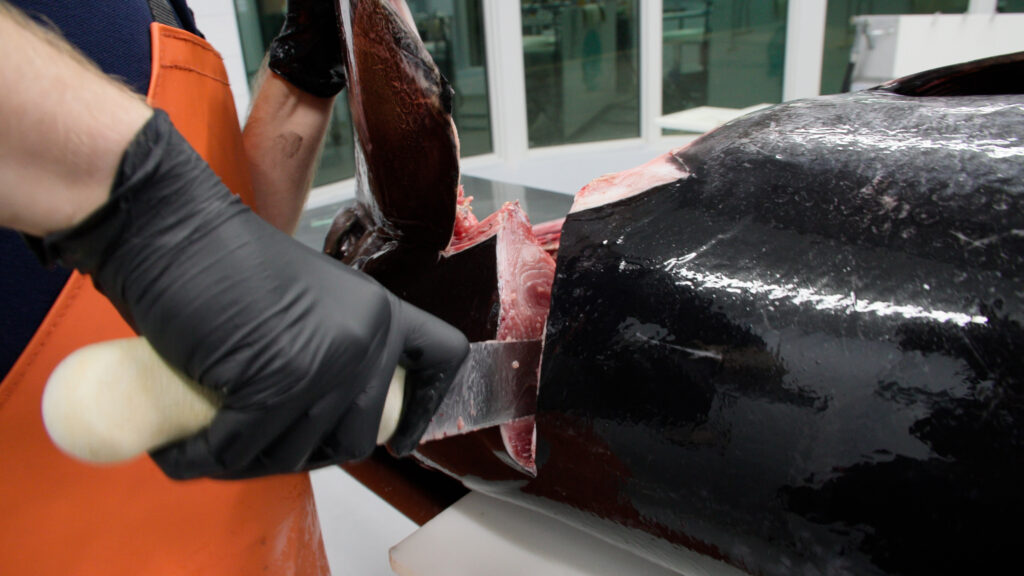
Step 1: Remove the Head
The first step to fillet bluefin tuna is to remove the head. You’ll want to locate the spinal vertebrae closest to the head. This is the easiest spot to cut through.
When making this cut, it might be tempting to grab a serrated knife, but that’s a mistake. A serrated blade can disrupt the grain of the meat, making the top loin less firm and less desirable. Instead, use a sharp, non-serrated knife to ensure clean cuts when you fillet bluefin tuna.
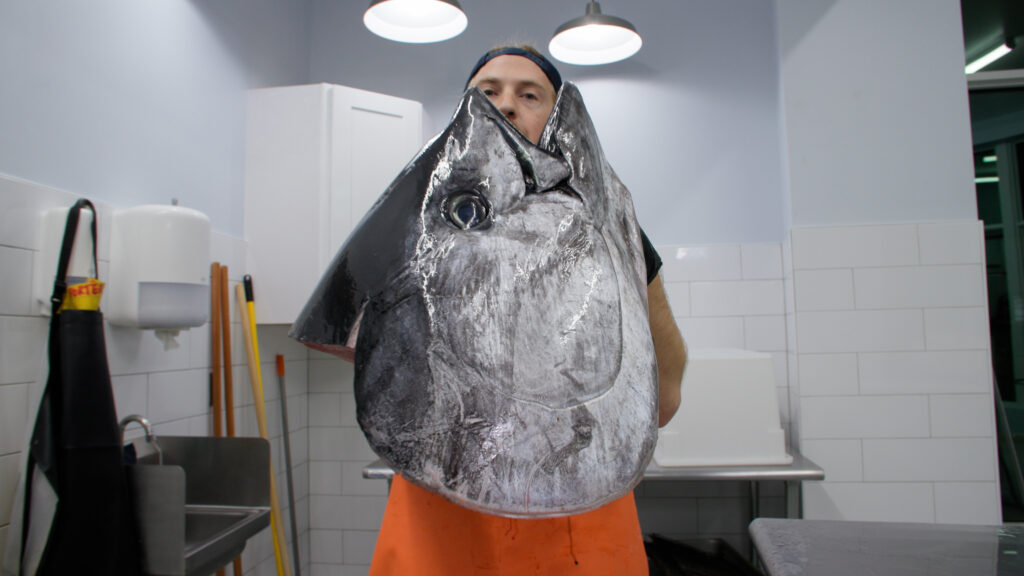
Step 2: Remove the Collars
Once the head is off, the next step is removing the collars. To do this, insert your knife underneath the collar bone and trace along the bone on both sides. You can choose to make this cut either just in front of or just behind the pelvic fin. I personally prefer to cut in front, leaving the pelvic fin attached to the low loin for removal later.
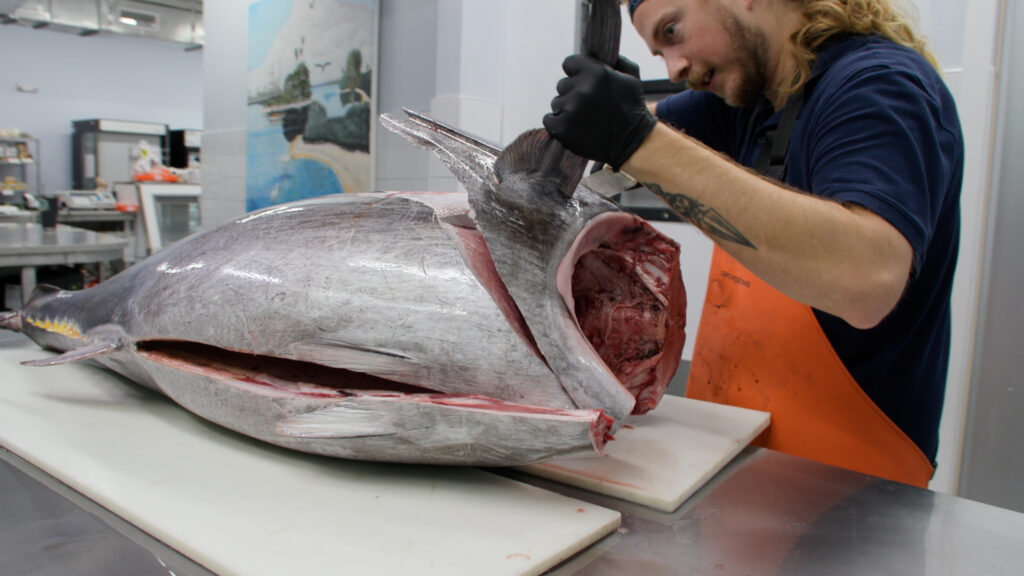
Step 3: Cut off the Tail
Next, we’re going to cut off the tail. It’s easiest to cut through the spinal vertebrae rather than trying to force your knife between the vertebral discs.
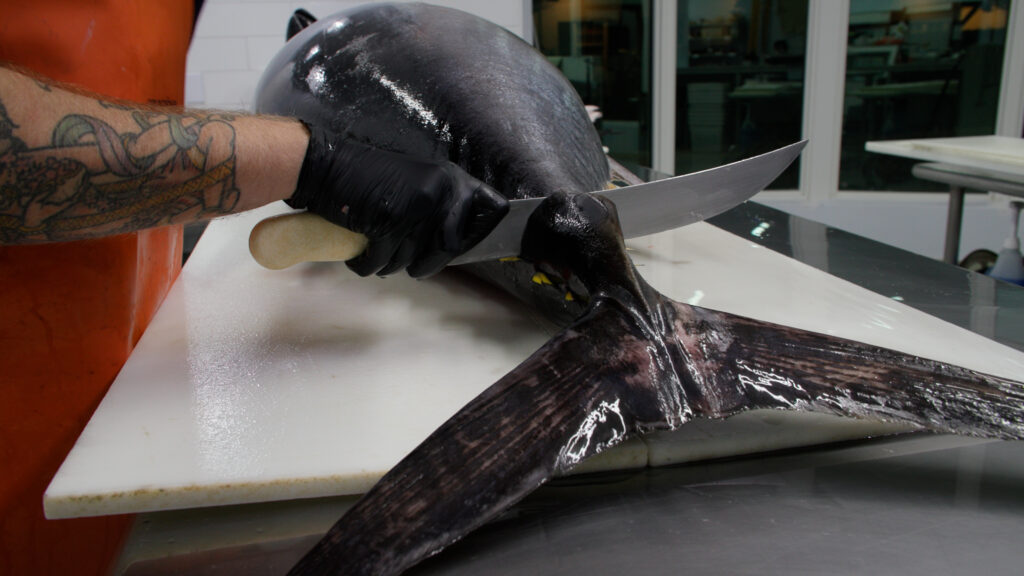
A useful trick to ensure you hit the vertebral disc every time is to count three yellow finlets up from the tail. This spot lines up perfectly with a vertebral disc, making it easy to sever the tail cleanly without needing a serrated knife.
Once both collars and the tail are removed, the fish is ready to be filleted.
Step 4: Fillet Bluefin Tuna
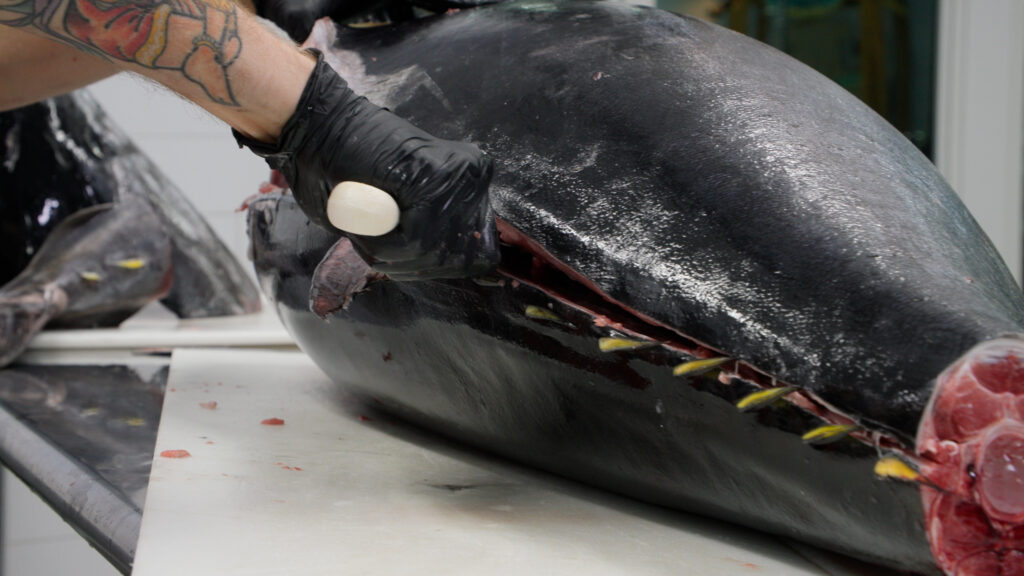
Start at the tail and work your way toward the head. You can use the opening at the tail to visually confirm where the spine is, ensuring your knife stays right on top of it, so you don’t leave any valuable meat behind. If you do leave a thin layer, it’s not a big deal; after filleting, you can use a spoon to scrape off any remaining meat from the spine.
This nakaochi (skeleton meat) is incredibly lean, tender and perfect for poke, tartare or spicy tuna.
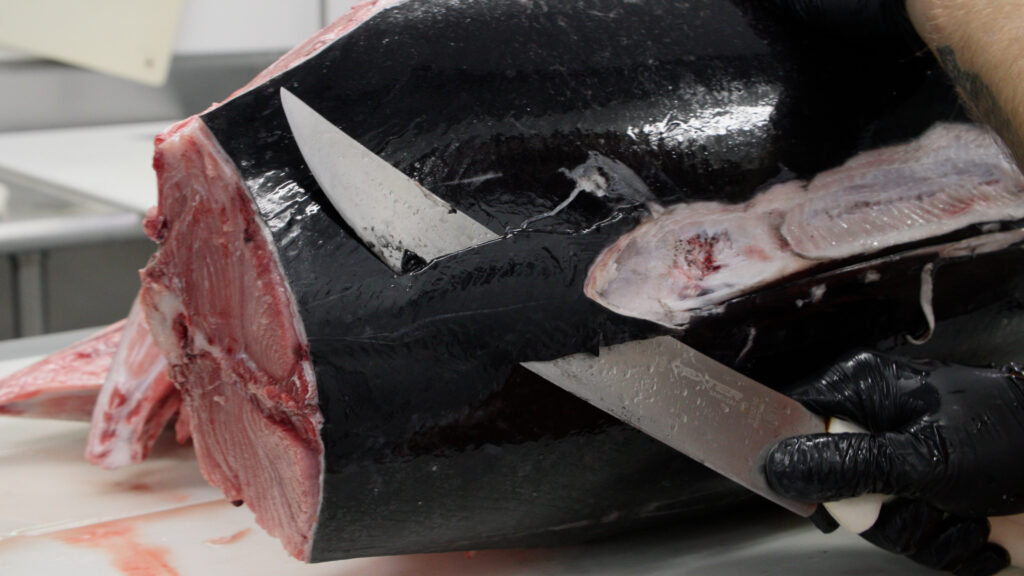
As you make your initial cuts, you’ll encounter thick skin near the head. You have two options:
1) Shave the skin off first – This allows for an easier cut without damaging the underlying meat.
2) Use a sharp knife and cut through it with speed and momentum. This approach minimizes overworking the high loin.
Once you’ve worked your way to the center spine, you’re almost ready for my favorite part of filleting a big tuna: removing the high loin.
Step 5: Remove the High Loin
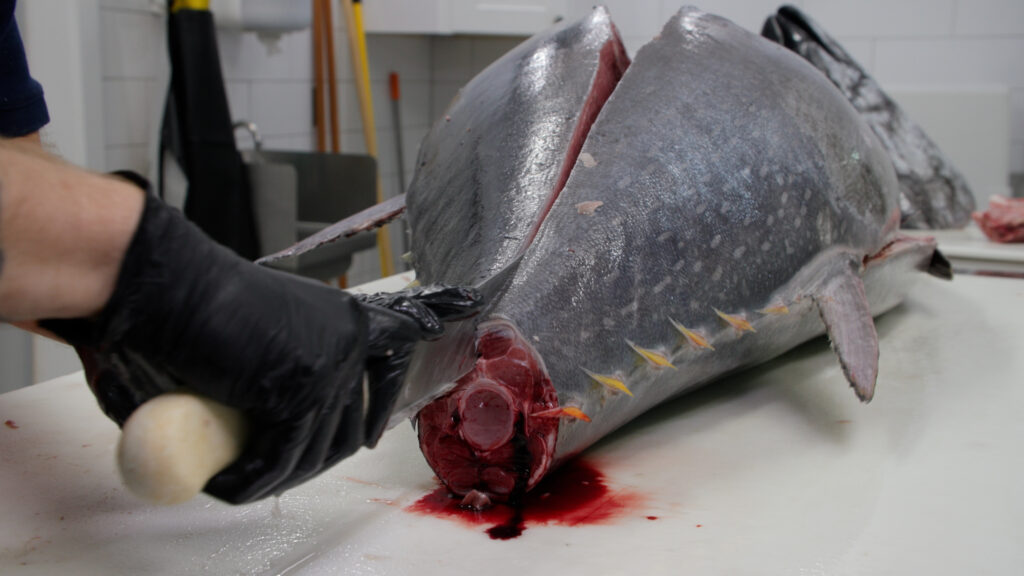
Look at the exposed meat where you removed the collars, and you’ll see the pin bone line. This is your reference point. Place your knife just inside the pin bone line, sink the tip of the blade down to the spine, and make a smooth, controlled cut all the way down to the tail in a straight line.
If done correctly, this will release the entire high loin, allowing you to roll it off the skeleton in one clean motion. This is one of the most satisfying parts of the process, especially when done smoothly.
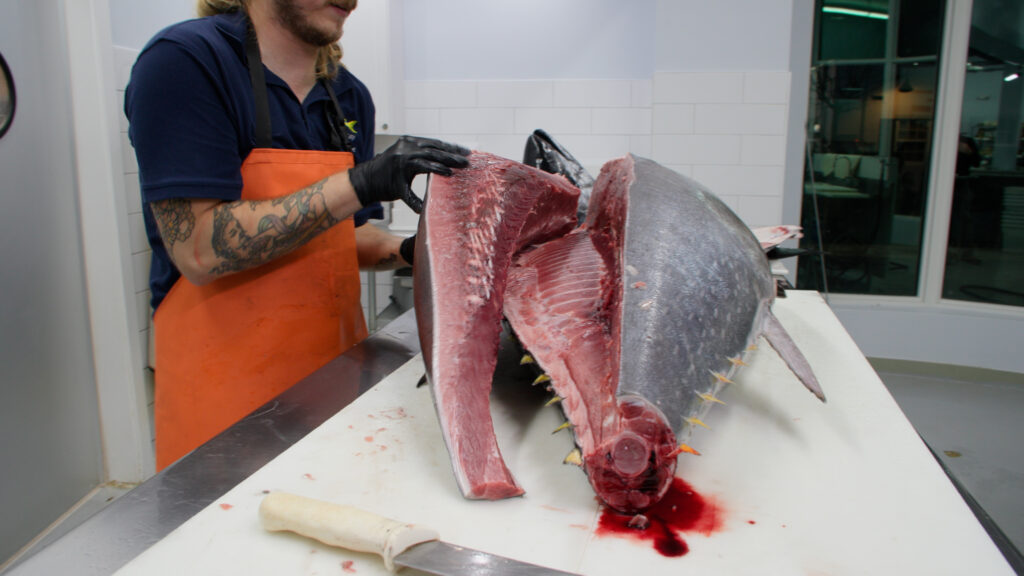
Step 6: Separate the Low Loin
Now it’s time to remove the low loin, which includes the prized belly meat, also known as otoro.
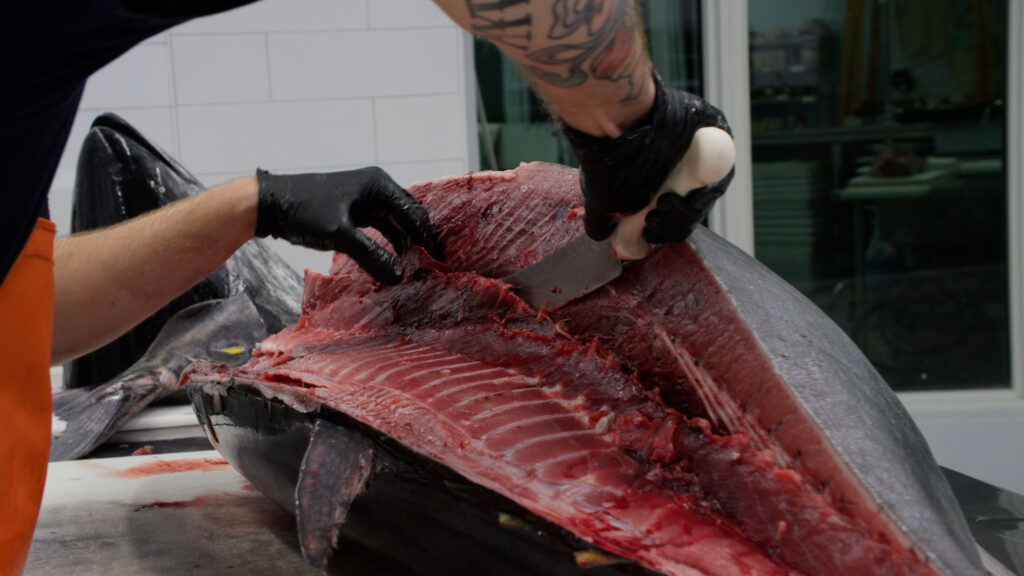
From inside the belly cavity, start your cut along the top of the anal fin. Guide your knife just above the skeleton, following the natural contours of the fish. Once you reach the spine, flip your knife around and cut in the opposite direction toward the head, letting the skeleton guide your blade.
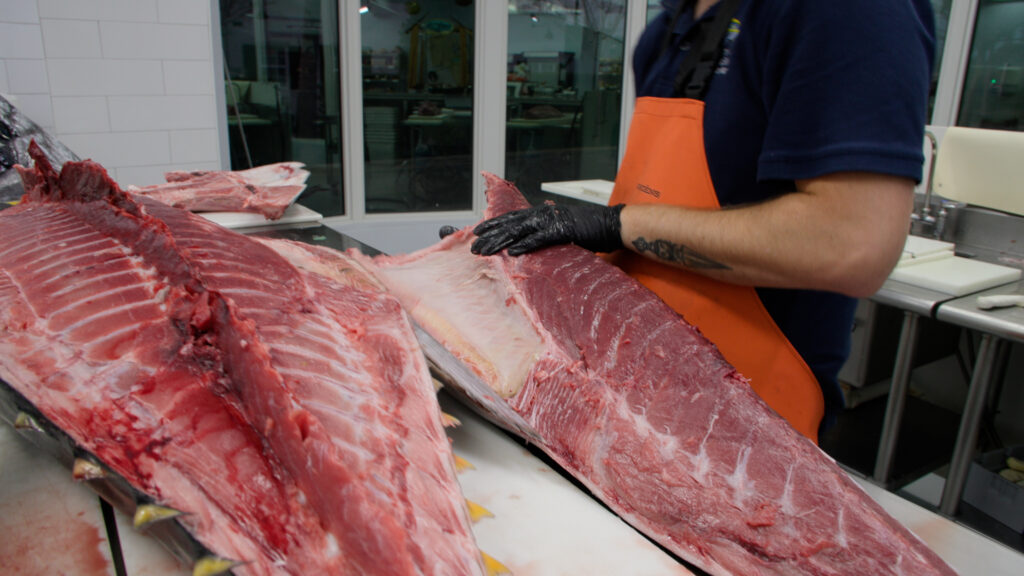
At this point, you’ll need to carefully slice through the rib bones. Once that’s done, place your knife just outside the pin bone line and make a clean cut toward the tail, allowing the entire low loin to roll off smoothly—just like you did with the high loin.
Step 7: Fillet the Second Side
Unlike the first side, the second side will be removed as one whole piece, instead of being quartered immediately. The process is nearly identical, except you’ll be working with the fish upside down. Instead of cutting down the pin bone line, leave the loins intact until you remove the skeleton.
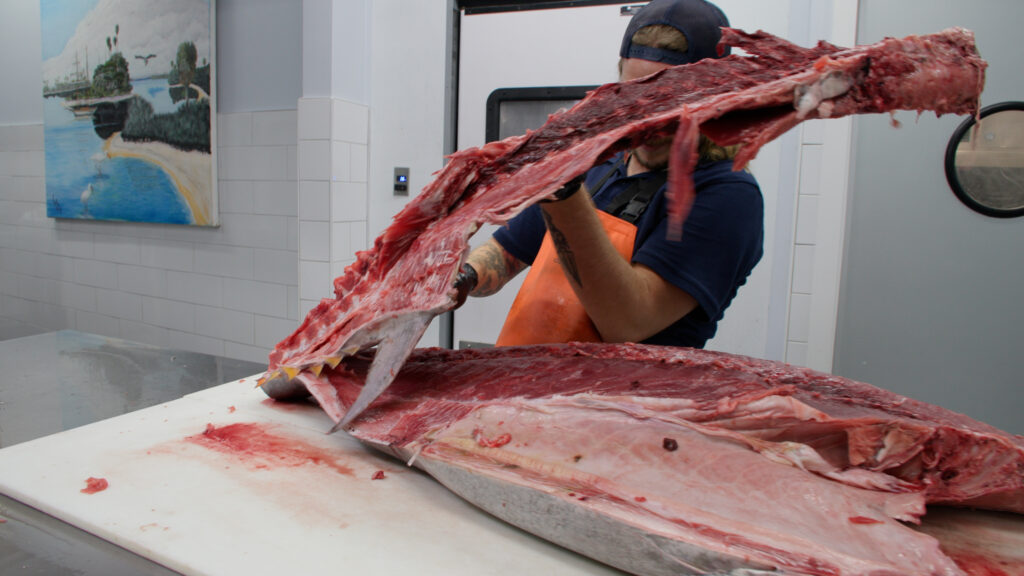
Once the skeleton is fully separated, you can go back and make the pin bone cuts to release the loins. This approach helps keep the structure of the fish intact while you work, making the second side easier to handle.
Breaking Down a Bluefin Tuna
Now that you’ve successfully broken down your bluefin tuna, the next step is trimming and portioning the loins. Proper trimming ensures each piece is ready for its intended use, whether it’s sushi, steaks, or grilling.
For a step-by-step guide on how to trim and portion your bluefin tuna, check out the video below!
5 High-Quality Fillet Knives
There are a lot of good fillet knives on the market. Here are a few quality knives to begin the search.
• The AFTCO 8-inch Flexible Fillet Knife has a full-tang Böker German stainless-steel blade with AFTCO’s gold tin finish. It was designed to retain sharpness and resist corrosion, and the textured polypropylene handle is slip-free.
• Dexter’s 7-inch Flexible Fillet Knife is the workhorse in a line of fish knives renowned among professionals for performance and value. High-carbon steel is easy to sharpen, and the Sani-Safe handle is grippy, even when wet.
• The Bubba 7-inch Tapered Flex Folding Knife is a folding fillet knife with a Ti-Nitride coated high-carbon stainless blade that is sharp and corrosion resistant. The non-slip handle features a trigger grip for security and control.
• Benchmade’s 7-inch Fishcrafter features the company’s CPM-MagnaCut steel that was created for corrosion resistance and edge retention with a medium flex. A Santoprene handle retains its grip even when it’s wet and slimy.
• The Toadfish 8.5-inch Stowaway Fillet Knife is a folding knife with a built-in carabiner to hang from a belt-loop. The blade is Japanese stainless-steel with a black finish and a serrated top edge. The non-slip handle is designed for a comfortable and secure grip.

